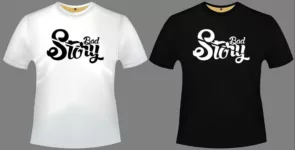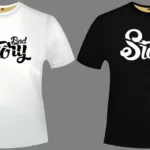In the world of custom apparel, innovation is the key to staying ahead. One of the latest and most exciting advancements in this field is Direct-to-Film (DTF) transfers. This method is quickly gaining popularity due to its versatility, durability, and high-quality results. Whether you’re a seasoned printing professional or someone exploring custom apparel for the first time, understanding DTF transfers can open up a world of possibilities.
What Are DTF Transfers?
DTF transfers are a method of printing designs onto fabric using a special film and adhesive. Unlike traditional methods such as screen printing or Direct-to-Garment (DTG) printing, DTF allows for vibrant, full-color designs to be transferred onto a wide variety of fabrics, including cotton, polyester, blends, and more. The process involves printing a design onto a film, applying a powdered adhesive, and then heat-pressing the design onto the garment.
This method is particularly popular for creating custom T-shirts, hoodies, bags, and other apparel items. One of the main advantages of DTF transfers is their ability to produce intricate designs with fine details and vibrant colors that stand out on any fabric.
How Does the DTF Transfer Process Work?
The DTF transfer process is straightforward but requires specific equipment and materials to achieve the best results. Here’s a step-by-step breakdown:
- Design Creation: The first step in the DTF transfer process is to create a digital design. This can be done using graphic design software like Adobe Photoshop, Illustrator, or any other program that supports high-resolution images. The design should be prepared in reverse or mirror image since it will be transferred face down onto the garment.
- Printing: The design is printed onto a special DTF transfer film using a DTF printer. These printers use CMYK (cyan, magenta, yellow, black) inks, and often a white ink layer is added for opacity, especially when printing on dark fabrics.
- Powdering: Once the design is printed, a powdered adhesive is applied to the wet ink. This powder sticks to the ink and will act as the adhesive that bonds the design to the fabric.
- Curing: The film is then passed through a curing station or placed under a heat press for a short period to melt the adhesive powder. This step ensures that the powder adheres properly to the ink and is ready for transfer.
- Transferring: The cured film is placed onto the garment, and a heat press is used to transfer the design from the film to the fabric. The heat press applies pressure and heat, activating the adhesive and bonding the design to the garment.
- Peeling: After pressing, the film is peeled off, leaving the vibrant design firmly attached to the garment. Depending on the film used, this can be done either hot or cold, as per the manufacturer’s instructions.
Advantages of DTF Transfers
DTF transfers offer several advantages over traditional printing methods:
- Versatility: DTF transfers work on a wide variety of fabrics, including those that are difficult to print on using other methods, such as nylon, leather, and silk. This makes it a versatile option for custom apparel creators.
- Vibrant Colors: DTF transfers produce bright, vibrant colors that don’t fade easily. The process allows for high-quality prints with excellent detail, making it ideal for intricate designs and full-color images.
- Durability: The adhesive used in DTF transfers ensures that the design is durable and long-lasting. The prints are resistant to washing, stretching, and cracking, making them ideal for everyday wear.
- Cost-Effective: Compared to methods like screen printing, DTF transfers can be more cost-effective, especially for small batches or one-off designs. There’s no need for screens or setups, which reduces the overall production cost.
- Ease of Use: The DTF process is relatively simple and can be done without the need for large-scale equipment. This makes it accessible for small businesses and hobbyists looking to produce high-quality custom apparel.
Applications of DTF Transfers
DTF transfers are perfect for a wide range of applications:
- Custom T-Shirts: Whether you’re creating a one-off design or producing a small batch, DTF transfers are an excellent choice for custom T-shirts.
- Sportswear: The durability of DTF transfers makes them ideal for sportswear that needs to withstand frequent washing and wear.
- Merchandising: Bands, artists, and businesses can use DTF transfers to create vibrant, detailed merchandise.
- Personalized Gifts: From tote bags to hoodies, DTF transfers allow for personalization of gifts with detailed designs.
Conclusion
DTF transfers are revolutionizing the custom apparel industry, offering a versatile, durable, and cost-effective solution for creating vibrant, detailed designs. Whether you’re a small business owner, a hobbyist, or just someone looking to create unique apparel, DTF transfers provide an accessible and efficient way to bring your designs to life. As the technology continues to evolve, it’s likely that DTF will become an even more integral part of the custom printing landscape.
Written by Barbara McGee






